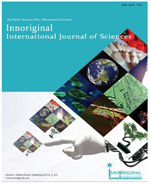STAVUDINE LOADED NONIONIC SURFACTANT VESICLES: OPTIMISATION OF FORMULATION, EFFECT OF PROCESS VARIABLES AND CHARACTERISATION
Abstract
Objective:The present work deals with the preparation, characterization and optimization of stavudine loaded nonionic surfactant vesicles (niosomes) for improvement in therapeutic index and efficacy of stavudine.Methods:Stavudine loaded niosomes were prepared by employing different methods using cholesterol and surfactants. The formulations were characterized for vesicle size, entrapment efficiency, in vitro drug release profile and stability under specific conditions of temperature and humidity. Further formulations were analyzed for effect of process variables like type and concentration of surfactant, concentration of cholesterol and method of preparation on vesicle size, drug entrapment efficiency and in vitro drug release profile.Results: Vesicle size analysis revealed that vesicles were descrete and spherical. Vesicles formed with Spans are smaller in size than vesicles formed with Tweens. The entrapment efficiency of the formulations was found in between 29.33%- 68.50%. The formulation RF1 showed the highest entrapment efficiency with 68.5%. The cumulative percent drug release was observed to be in-between 67.45% to 83.46% in 24 hrs. Highest cumulative percent drug release was observed for formulation TF2 with 83.46%. Stability study indicated 4-8ºC is the most suitable condition for storage of Stavudine loaded niosomes.Conclusion:The results of the study revealed that stavudine loaded niosomes are capable of releasing the drug for extended periods of time. Key words: HIV/AIDS, niosomes, thin film hydration, in vitro release, and stability study.Downloads
Published
2014-11-01
How to Cite
Goudanavar, prakash. (2014). STAVUDINE LOADED NONIONIC SURFACTANT VESICLES: OPTIMISATION OF FORMULATION, EFFECT OF PROCESS VARIABLES AND CHARACTERISATION. Innoriginal: International Journal of Sciences. Retrieved from https://innoriginal.com/index.php/iijs/article/view/16
Issue
Section
RESEARCH ARTICLE


